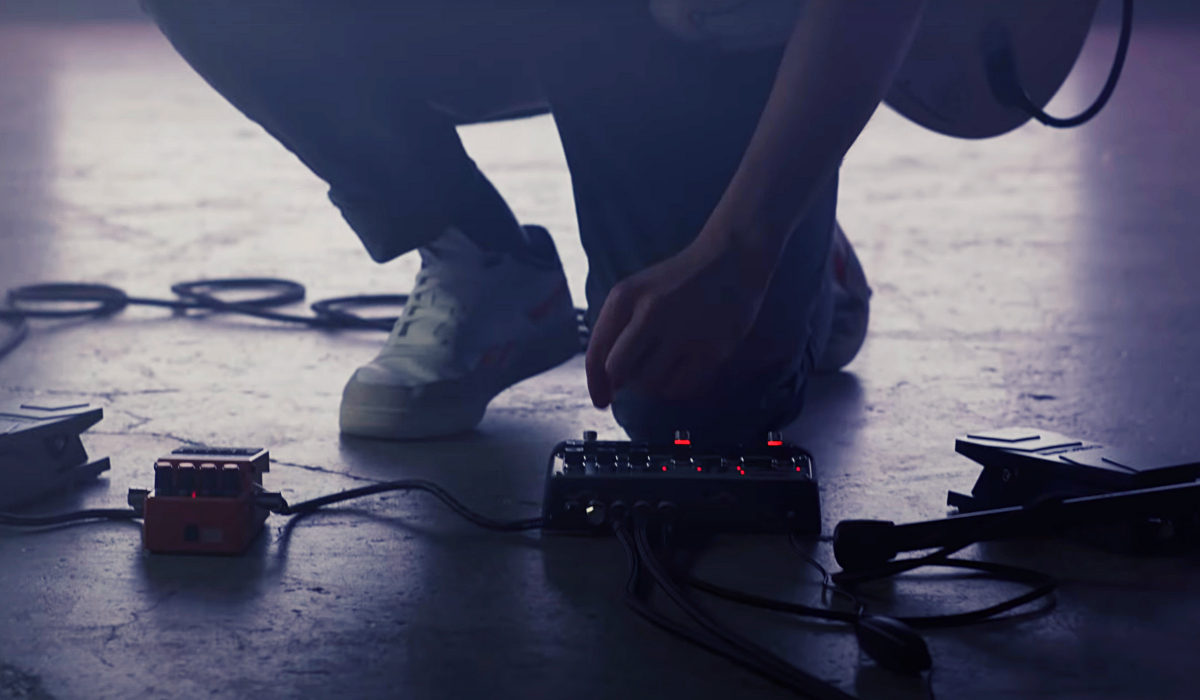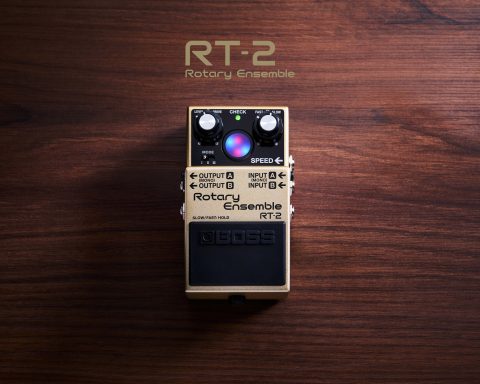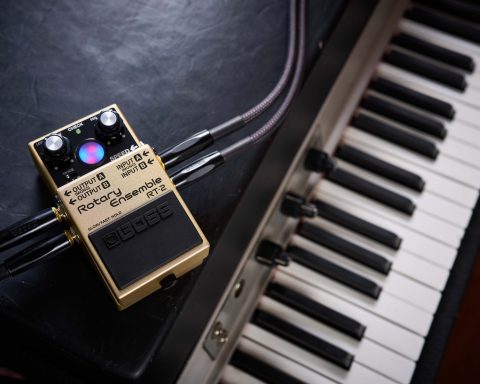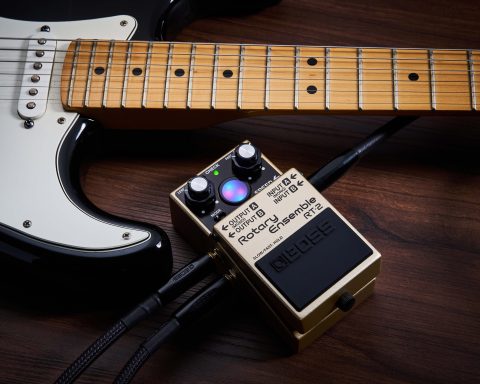ディレイはミュージシャンにとって必要不可欠なツールですが、演奏するジャンルによって考慮すべき点が異なります。ここでは、プレイヤーの目的に合ったディレイ・ペダルを手に入れるための、ジャンル別のヒントを紹介します。音楽には、正解も不正解もありません。しかし、理想的な音を目指したいとき、BOSSのディレイ・ペダルが導いてくれるでしょう。軽快なデジタルのリピートから温かい雰囲気のエコーまで、シューゲイザー、ロック、メタル、ジャズ、ワーシップなどに最適なディレイを見ていきましょう。
ディレイが使われるジャンルについて
ディレイを最も多用するジャンルとして、シューゲイザー、ダブやレゲエ・ミュージック、メタル、特にテクニカル・メタル、クラシック・ロック、宗教音楽が挙げられます。ジャズやブルースでは、ディレイ・スタイルの音を作るリバーブとして、オーバードライブと組み合わせてエフェクトを散発的に使用します。ディレイとオーバードライブの組み合わせは、両方のペダルを最大限に活用する最良の方法のひとつです。
「シューゲイザーでディレイを使うなら、テープのサチュレーション、アナログならでは温かいキャラクターを活かしてサウンド・メイクしたいと思う方もいるでしょう」
シューゲイザー
シューゲイザーでディレイを使うなら、DD-8、DM-101、DD-200、RE-202がおすすめです。これらの機材は複数のオプション、正確なタイミング、アナログのサウンドを備えたデジタルの信頼性が魅力です。最高のシューゲイザー・ディレイでは、長めのディレイ・タイムとアンビエンスで行う複数のリピートが鍵となります。また、シマー・エフェクトとモジュレーションがあり、ステレオ機能があるのが理想的です。プレイヤーの中にはテープのサチュレーション、アナログならでは温かいキャラクターを活かしてサウンド・メイクしたいと思う方もいるでしょう。
DD-8にはタップテンポ機能があり、タイミングを調整することができます。また、シューゲイザー・サウンドに欠かせないリバースやシマー・モードなど、複数のディレイ・モードを搭載しています。DM-101はヴィンテージ・スタイルのディレイから、デジタル時代にインスパイアされた現代的なダブリング・ディレイまで、12種類のディレイ・モードを備えています。しかし、シューゲイザー・ギタリストが好むのは、瑞々しく幽玄なアンビエントで空間を満たすことができる音色です。
DD-200にはシマーやデュアル・ディレイを含む12種類のディレイ・モードが搭載されています。RE-202のディレイは、Boards of Canadaのアルバムで聴くことができる、温かみとうねりが加わったクラシックなテープ・エコーが特徴的です。また、DD-200とDM-101にはステレオ機能が搭載され、複数のディレイ・パターンを使用できます。DD-200とDM-101は、ステージ上にもっとギターがあるように聞こえ、音の壁があるようなシューゲイザーの効果を生み出します。
「リズム・ラインに没入感のあるシューゲイザー・ディレイを探していますか?それなら、RE-202やDD-500を試してください」
シューゲイザー・ディレイの設定
アンビエントなシューゲイザー・ディレイには、BOSS DD-200のPAD ECHOモードが最適です。タイム・レンジを500~700msに設定し、フィードバックのリピートを8~10回、エフェクト・レベルを高くして、ペダルを押し込めば、シューゲイザーの世界へとプレイヤーを誘います。
リズム・ラインに没入感のあるシューゲイザー・ディレイを探していますか?それなら、RE-202やDD-500を試してください。これはモジュレーションやリバーブ付きのディレイを、400~600msのタイムで、6~8回リピートする高いフィードバックで、エフェクト・レベルを高めに設定したディレイでも代用できます。また、低音が高音域をかき消さないようにEQを調整しましょう。
ロックとメタル
ロックやメタルに最適なディレイ・ペダルは、DD-3TとDD-8の2機種です。ロックやメタルのジャンルでは、力強くてアグレッシブな音が求められます。タップ・テンポを備えたBOSS DD-3Tやタイム・インターバルを追加できるDD-8のようなデジタル・ディレイが非常に役立ちます。これらのペダルは精度が高く十分な汎用性を兼ね備えており、簡略化されたインターフェイスで素早く思い通りの音を作り出すことができます。Slashは最も有名なディレイ・ペダル・アーティストの1人で、“Welcome To The Jungle”のイントロを含む、アルバム”Appetite For Destruction”のレコーディングでも使用しています。
ロックやメタルにおけるデジタル・ディレイは信号を濁すことなく、引き締まったリズミカルなエコーや広がりのあるサウンドスケープを作ることができます。ロックにはディレイとSD-1のようなオーバードライブを組み合わせましょう。メタルではディレイとMT-2 Metal Zoneのようなディストーション・ペダルの組み合わせがおすすめです。そして、ユニティと同じくらいか僅かに高めにLEVELを設定し、ミックスをクリアに切り裂く強烈なサウンドを作りましょう。The Darkness、Pink Floyd、Deep Purple、Black Sabbathのようなクラシック・ロックの雰囲気を出したい場合は、アナログ・ディレイを試してみてください。この場合、音がかき消されないようにレベルを下げてください。
「ロックにはディレイとSD-1のようなオーバードライブを組み合わせましょう。メタルではディレイとMT-2 Metal Zoneのようなディストーション・ペダルの組み合わせがおすすめです」
メタルのディレイ設定
トレモロ・ピッキングやリフを多用するヘビー・メタル系のディレイ・ペダルの設定では、ディレイが音を追い越さないようにします。FEEDBACK(REPEAT)を1~2回に、DELAY TIMEを300~800msに、LEVELを10時の方向に設定し、元音源に収まるようにします。
ロックのディレイ設定
伝統的なロック・サウンドに仕立て上げたい時、特にソロがある場合は、300〜500msのDELAY TIME、2〜3回程度のリピートでFEEDBACK、ユニティよりも低めのLEVELを設定します。ディレイを際立たせたいのか、補助的な要素にしたいのかによって、ミックス・レベルを調整してください。
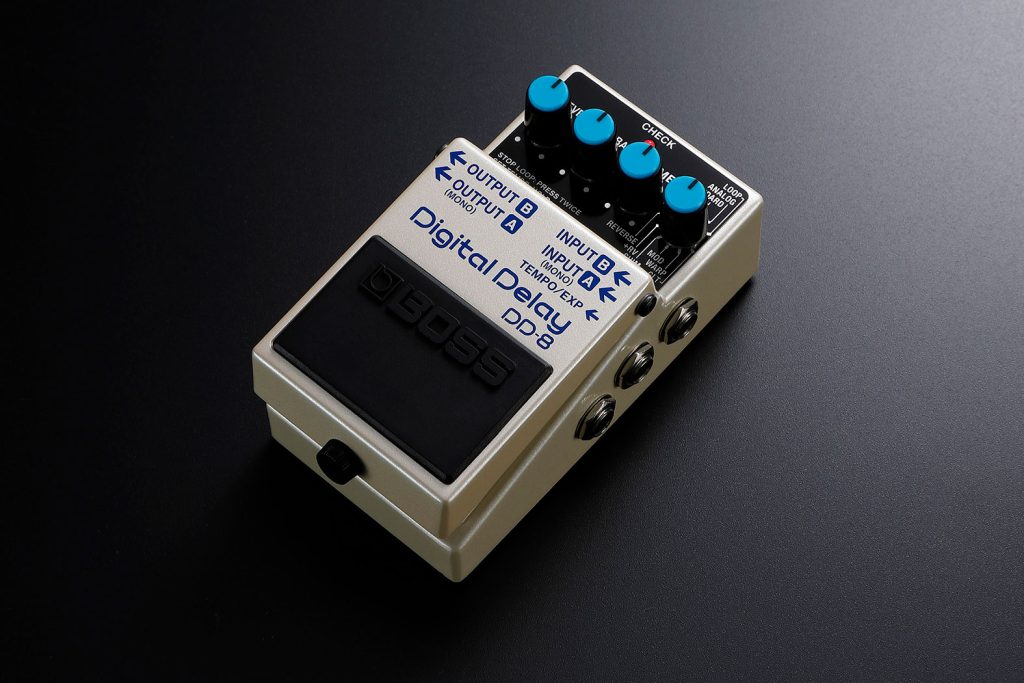
ジャズ
ジャズと相性の良いディレイは、DD-8のようなデジタル・ディレイかDM-2Wのようなアナログ・ディレイでしょう。どちらもジャズのギタリストがソロ演奏による隙間を埋めることができ、音を強調するために、即座にスラップバック・ディレイをかけることができます。より洗練されたニュアンスの音が求められることの多いジャズ。そのため、必ずしもディレイ・ペダルが必要不可欠というジャンルというわけではありません。特に、ジャズ・プレイヤーが好んで使用するホロー・ボディのギターでは、フィードバックの原因になることもあります。
DM-2Wのようなアナログ・ディレイは、ジャズの複雑なダイナミクスを圧倒することなく、温かみのあるリピートで深みを加えます。必要に応じて、ソロ演奏やコードの音にアクセントや温かみを与えることも可能です。DELAY TIMEを長めに設定し、DD-8のFEEDBACKを低めに設定すると、ソロやコード進行を強調する穏やかなエコーが完成します。クリアで鮮明なサウンドはそのままに、奥行きを与えてくれます。
「オーバードライブやプリアンプ・ペダルをディレイの前に置き、ディレイのリピートを鮮明に保ちましょう」
フュージョンの演奏者であれば、ホールド機能を大変気にいるでしょう。演奏中の音をクリアに保つだけでなく、ホールドした特定の音を強調することができます。ステレオ出力は、ステレオ・アンプとのセットアップにも最適です。
ジャズのディレイ設定
ジャズ・プレイヤーは多いリピート数で音がディレイで埋もれてしまうのを好まないため、ディレイは短めに抑えましょう。EFFECT LEVELを低めに設定し、FEEDBACKを1~2回のリピートとなるように設定。DELAY TIMEをできるだけ短く設定すると、よりリバーブ・スタイルのスラップバック・ディレイが完成します。
ワーシップ(宗教音楽)
ワーシップと組み合わせるなら、DD-200、RE-2、DM-101がおすすめです。DD-200は優れたデジタル精度と幽玄なシマー・ディレイが特徴です。また、RE-2はテープ・エコーならでは変調感を調節するWOW & FLUTTER、DM-101はモノとステレオをミックスした12種類のアナログ・ディレイ・サウンドを搭載しています。
ワーシップ・ミュージックやワーシップ・ギタリストは、ディレイ・ペダルを用いた幽玄でエモーショナルな雰囲気を好みます。複数のディレイ・スタイルを操り、重厚な音のキャンバスを作り出すのも大切なテクニックです。BOSS RE-2のようなテープ・エコーの設定を備えたペダルは、個性的なうねりを生み出し、みずみずしいアンビエントのエコーを鳴らします。これにリバーブやモジュレーション・エフェクトを組み合わせれば、音は高揚する讃美歌のような振動と共鳴します。
「ワーシップ・ギタリストはシマー・セッティングに重点を置いています。みずみずしいテクスチャーにピッチシフトされたディレイを作ることができるからです」
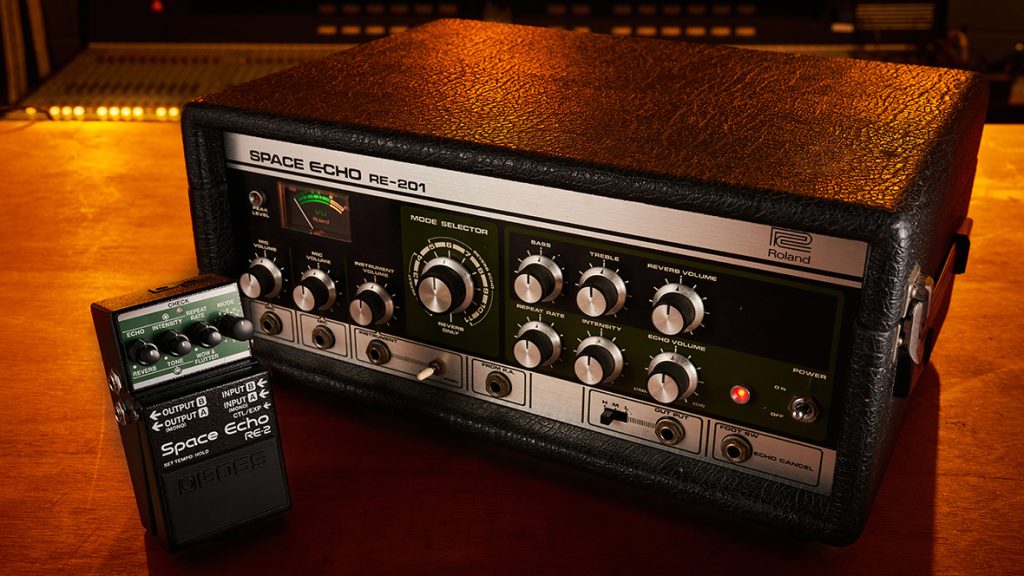
DD-200 デジタル・ディレイ・ペダルは、多彩なサウンドを求めるワーシップ・ギタリストにとって、最もパワフルなマルチ・ディレイ・ペダルのひとつです。彼らはシマー・セッティングに重点を置いています。U2の”With or Without You”のようにみずみずしいテクスチャーにピッチシフトされたディレイを作ることができるからです。DD-200にはStandard、Analog、Tape、Drum、Shimmer、Tera Echo、Pad Echo、Pattern、Lo-Fi、Dual、Ducking、Reverseのディレイ・エフェクトが搭載されています。また、タップ・テンポ、4つ以上のメモリー・バンク、各パラメーターのトータル・コントロールが可能で、どんな曲にも応用できます。MIDI接続が可能なため、ステージ上のDAWやバッキング・トラックと連動させることができます。この機能は、特にライブ環境で役立ちます。
アナログ・ディレイの音が好みなら、DM-101は絶対的なスタンダードのマルチ・ディレイ・ペダルであり、ワーシップとも相性が良いです。アンビエンス、デュアルモード、パン、パターン・ディレイなど、ヴィンテージからモダンまで12のモードを搭載し、オプションも豊富です。また、ミニTRSコネクターによるMIDI I/Oに対応し、柔軟なシグナル・ルーティングが可能なステレオ出力も装備しています。DM-101はデジタルの機能性と正確さ、アナログの音とニュアンスを求めるワーシップ・ギタリストに最適なツールです。
ワーシップのディレイ設定
飾り気のないディレイをかけたい場合は、シマー(揺らぎ)のあるペダルを探してください。そして、EFFECT LEVELを1時方向に設定し、元の信号よりも少し大きめにします。800~1200msのディレイにはFEEDBACKを1時方向に設定し、単音のリード・ラインを際立たせるためにREPEATを3~4回に設定します。
ブルース
ブルースに最適なディレイ・ペダルは、DD-3TやDD-8などのデジタル・ディレイ、またはRE-2やDM-101などのアナログ・ディレイです。ブルース・セッションに同じテンポはなく、その場で変化するため、プレイヤーにとってタップ・テンポはなくてはならない機能です。RE-2は伝統的なテープ・ディレイ・サウンドが特徴的です。DM-101には複数のディレイ・オプションと卓越したコントロールが備わっており、アナログの温かみを再現します。DD-3TはDELAY TIMEの時間範囲が3段階から選択可能なデジタル・ディレイです。
前述の通り、ブルースは完全に飽和した音色ではなく、繊細なタッチのディレイと相性がいいです。DM-101やRE-2のような柔らかいアナログ・ディレイやテープ・ディレイの温かみで有機的なリピートは、ミックスの際になめらかに溶け込みます。また、サイケ・ブルースのフリークアウトやPink Floyd風のソロでは、音響スペクトラムを操作できます。ヴィンテージ調のブルース・サウンドがお好きな方におすすめです。

DD-3TやDD-8のようなデジタル・ディレイは、フットプリントが小さく、繊細なスラップバックからリバーブ用のディレイ、カントリー・スタイルのディレイ・トーンまで、あらゆる音を作り出します。オリジナルの信号の明瞭度をできるだけ保ちたいのであれば、デジタル・ディレイの方が良いかもしれません。John Mayerの80年代ロックやブルースの雰囲気が好きなら、デジタル・ディレイが最善の選択となるでしょう。
DM-101はMIDI機能の正確さとアナログ的なニュアンスを持ったトリガーが可能で、コントロールとカスタマイズを求めるブルース・プレイヤーにおすすめです。12種類のモードと多彩なトーン・シェイピング・コントロールを搭載しています。REFLECTモードをはじめとして、DM-101はブルース・ミュージックのソウルフルな音色に自然と溶け込む、温かい本格的なエコーを鳴らします。
「REFLECTモードをはじめとして、DM-101はブルース・ミュージックのソウルフルな音色に自然と溶け込む、温かい本格的なエコーを鳴らします」
ブルースのディレイ設定
より速いロックやブルースには、スラップバックと適度なディレイが必要です。TIMEを250~350ms、REPEATを低めに設定し、EFFECT LEVELをユニティより低めにして、ドライ信号とうまくブレンドさせます。ゆったりとしたリード・トーンにしたい場合は、FEEDBACKを強め(REPEATは2~3回)、TIMEを400ms程度まで上げます。スロー・ブルースの場合は、ビンテージ・スタイルのディレイを選択し、TIMEを400~500ms、FEEDBACKを中程度、EFFECT LEVELをドライ信号と同じくらいにします。
レゲエ
レゲエ/ダブに最適なディレイ・ペダルは、クラシックなダブ・エフェクトのDD-3T、温かみのあるテープ・エコーのサウンドを搭載したDD-8やマルチヘッド・スペース・エコーのサウンドを搭載したDD-200、そしてテープ・ディレイ・モジュレーションによる本格的なヴィンテージ・ダブ・サウンドのRE-2です。
レゲエ・ミュージックは、ブルースやカントリーよりもリピートが多く、リズミカルで宇宙的なエフェクトを作るためにディレイを使うことが多いです。タップテンポ機能を備えたDD-3Tのように、ビートにシンクできるディレイ・ペダルが最適です。テンポを維持しながらディレイを輝かせることができます。短いDELAY TIME、高いFEEDBACK、ステレオ・セットアップですぐに劣化するレベルを試すと、左右のチャンネル間でエコーが跳ね返るダブ・サウンドが得られます。
「ダブで重要なのは、長めのリピート、わずかなモジュレーションを伴うテープ・サチュレーション、程よく主張するサウンドです」
DD-3Tのようなディレイ・ペダルは、クラシックなダブ・エコーが得られ、タップ・テンポでコントロールできるため、信号が濁ることがありません。より温かみのあるサウンドやテープ・エコーのようなスタイルに、デジタルの信頼性とモジュレーション効果を加えたいのであれば、DD-200やDD-500ペダルも理想的です。RE-2は自然なテープ・スタイルのWOW &FLUTTER、豊かなトーンで劣化するビンテージ・ダブ・サウンドを得ることができます。
ダブで重要なのは、長めのリピート、わずかなモジュレーションを伴うテープ・サチュレーション、程よく主張するサウンドです。そうすることで引き締まったリズムを保つことができます。アナログとデジタルのディレイ、あるいはその逆を好むかもしれません。

無限の可能性
多様なジャンルに対応するディレイ・ペダルには無限の可能性があります。メタル・プレイヤーであれば自ら音を濁らせるアナログ・ディレイに惹かれるでしょうし、明瞭なデジタル・ディレイ派の人もいるでしょう。ブルース・プレイヤーは宇宙的な効果を狙うために、より飽和したディレイ・トーンを求めているかもしれません。どのジャンルにおいても、ルールはありません。自分独自のサウンドを追求するのもいいですし、まずは好きなアーティストのディレイの使い方を真似てみるのもよいでしょう。

